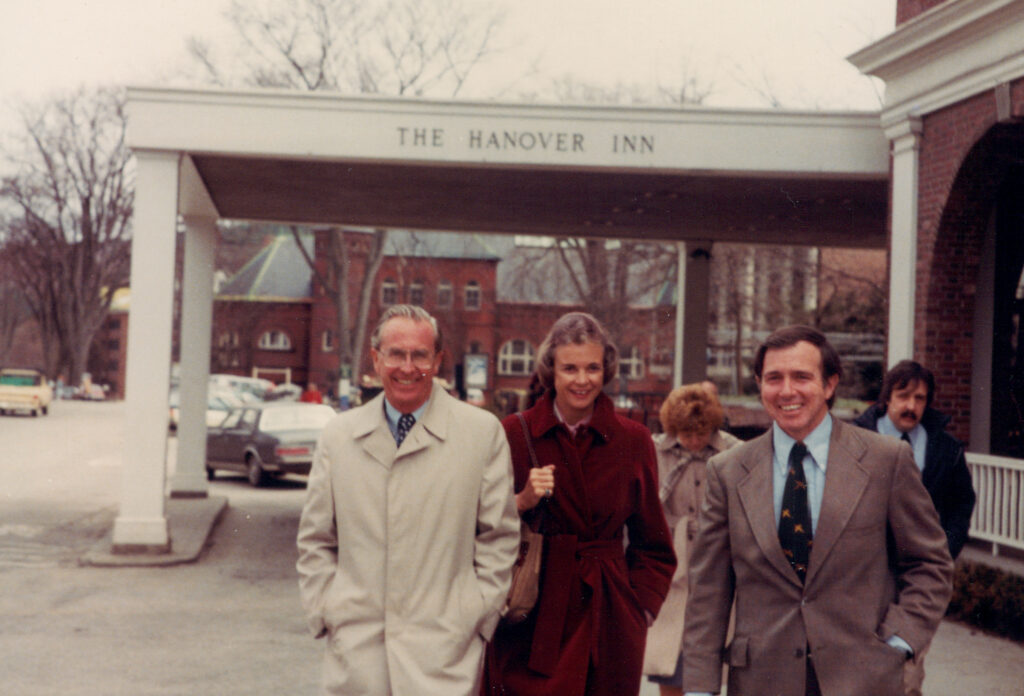
Former Associate Justice of the U.S. Supreme Court Sandra Day O’Connor passed away on December 1, 2023. O’Connor made history as the first female Justice on the Court. She served for 25 years, from 1981 to 2006, and her philosophical imprint remains on the Court to this day.
Justice O’Connor’s death ought to prompt us to reflect on the importance of judicial independence and, what’s more, the necessity for some degree of judicial institutionalism in order for much of the American citizenry to maintain faith in the high court. We also should renew our understanding of the magnitude of Justice O’Connor’s invaluable contributions in paving a path for women in the highest reaches of government.
As a woman practicing law in the 1950s, Justice O’Connor experienced many hardships. She was turned away from prestigious opportunities for which she had often far exceeded the qualifications. Despite graduating at the top of her class at both Stanford and its law school, O’Connor was denied opportunities time and again on account of her gender.
Undaunted, Justice O’Connor persisted in pursuing her ambition. After securing a number of positions that were well below her credentials, she secured election as an Arizona state senator, a career rarity for a future justice in modern America. Indeed, she is the most recent Supreme Court Justice with previous legislative experience, and she even served as the Republican caucus leader. She was later appointed as a state appellate judge.
During his 1980 presidential campaign, Ronald Reagan promised to appoint the first woman to the Court. O’Connor later described how, when she heard President Reagan’s campaign pledge to appoint a woman, she never imagined she would even be in the running. Reagan’s 1981 selection of O’Connor to fill the first vacancy that occurred during his administration shocked the staunchly conservative portion of his base. Many such supporters claimed Reagan was making a reckless choice without consideration for how O’Connor’s tenure would shape the Court.
It is unquestionable that the misgivings of O’Connor’s more conservative detractors had some merit, but it is unlikely that President Reagan would have predicted O’Connor’s drift to the center during her time on the Court. Then again, perhaps Reagan’s concern for the legitimacy of the Supreme Court triumphed over ideological minutiae during the appointment process.
In an interview years later with 60 Minutes, Justice O’Connor described the immense burden that she felt had been placed upon her shoulders by virtue of being the first woman on the Supreme Court. She described her concern that a poor performance would hamper the ability of other women in the future to serve on the Court. But of course, O’Connor’s tenure was marked by superb performance. What even her detractors, both conservative and liberal, could not deny was that she possessed astute Constitutional knowledge. This was made evident in her airtight opinions, unassailable both in facts and progression of logic, to which opposing opinions on the Court rarely could hold a candle.
Despite being appointed by Reagan, a stalwart right-winger, Justice O’Connor was anything but a rubber stamp for the conservative voting bloc on the Court. In fact, she quickly became the deciding vote on the Court, elevating concerns regarding institutionalism and precedent to a degree that other conservatives would not indulge. Some instances of cautious ideological departure include her votes (and opinions) on cases regarding affirmative action, abortion, and school prayer.
A number of Justice O’Connor’s detractors on the right have described her shift from conservatism towards right-centrism as indicative of a lack of core principles. I could not disagree more strongly. When O’Connor retired in 2006, the Court lost one of the only members whose votes on controversial cases could not be mapped onto ideological lines. With the exception of Chief Justice John Roberts, this is scarcely seen on the Court today. From an institutionalist perspective, the ideological polarization of the Supreme Court is what has led to what many pundits consider to be declining respect for the high court. Of this trend, Justice O’Connor remarked: “The law can be a beacon for what is right and just, but it can also be skewed by personal biases and opinions.”
In the eyes of much of the American public, the Roberts Court has lost some legitimacy for being perceived as unduly partisan. Indeed, since Justice O’Connor’s departure from the bench, the Court has had a piece missing—it no longer has that strain of the nonpartisan constitutional voice that once made the Court seem, to America, a shining institution above the fray.
Justice O’Connor’s commitment to an independent judiciary continued in her final years, when she became a strong advocate for abolishing elections for state judges, which she viewed as far too partisan a process by which to obtain judicial office. To Justice O’Connor, the practice compromised the ability of judges to rule solely in accordance with the law as opposed to partisan and political interests.
Justice O’Connor performed brilliantly as a justice and paved the way for women to be welcomed into the upper echelons of the federal judiciary. Of the six most recent justices to be appointed to the Court, four have been women. We have Justice O’Connor to thank for charting the way for women to serve on the bench and for the United States to take a step closer to achieving gender equality. In the thoughtful words of Chief Justice John Roberts, “The time when women weren’t on the bench seems so far away, because Justice O’Connor was so good when she was on the bench. She was so successful that the barriers she broke are almost unthinkable today.”

Be the first to comment on "Sandra Day O’Connor: Stalwart of an Independent Judiciary"